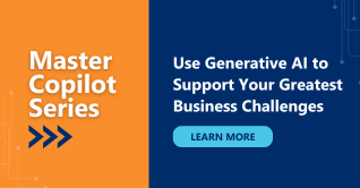In today’s rapidly evolving markets, with technologies and customer expectations changing more and more rapidly, companies recognize the need for digital transformation. And yet, studies show that 70% of digital transformations fail.
Despite their best intentions, many organizations get caught up in long-term digital transformation plans that don’t deliver value for months or even years. It’s no wonder that the results are mixed at best.
Whether you’re just getting started or facing yet another costly, time-consuming roadblock on your digital transformation journey, we recommend taking an entirely different approach: committing to an Agile digital transformation.
Defining an Agile approach to digital transformation
Although it’s most often used as a framework for software development, the principles of Agile methodology are exceptionally well-suited for complex projects of any kind, including the wholesale change required for a successful digital transformation. The key benefits of an Agile approach include:
- A customer-centric mindset
- Speed of change with a focus on delivering value right away
- Flexibility and rapid response to changing circumstances
- A holistic view of the solution
For companies that need to keep pace with changing circumstances and shifting customer expectations, it’s easy to see why an Agile approach to digital transformation makes sense.
Implementing an Agile digital transformation
To pivot from a long-range digital transformation effort to a more Agile approach, apply the key benefits listed above to the digital transformation context.
Agile digital transformation starts with a customer-centric mindset
Successfully responding to customer expectations may require a significant shift in your business culture. An Agile digital transformation begins with building this new mindset from day one.
The Agile methodology frames every task in light of how it impacts the end-user. In the digital transformation context, this translates to viewing work through the lens of customer experience.
To that end, an Agile digital transformation begins with defining customer personas. In other words, we discover who the customers are and what they want. From that starting point, we evaluate every potential phase or step we might take in terms of the value it would deliver for the customer and the acceptance criteria that would define success. This makes it easy to prioritize work and build a path forward, and it reinforces a business culture that puts people first and solves real problems for real customers.
Agile digital transformation focuses on delivering value right away
Agile methodology breaks work into short sprints, with each sprint focused on delivering value within a few weeks.
While the speed to results quickly builds equity with customers and stakeholders, the true value of this approach is the ability to test assumptions and manage risk as you go. By managing change in small increments, any mistake or failure can be mitigated quickly — reducing the organization’s exposure to risk and minimizing costly wrong turns — and your digital transformation can get back on track fast.
Most companies find an Agile approach to digital transformation also helps to refine customer models, especially as expectations change. Instead of assuming you know what your customers want, you can test and refine products, processes, and solutions in real time, with real people.
Agile digital transformation increases flexibility and enables iterative innovation
As you collect feedback from incremental rollouts and real-world testing, Agile methodology enables your organization to grow in flexibility. At the end of each sprint, your team will conduct a Sprint Review & Retrospective, looking at data and outcomes to decide whether or not to continue, pivot, or change your approach.
Organizations that report successful digital transformations adopt a permanent posture of growth. In this mindset, there is no “one and done.” There is always room for improvement, for increasing effectiveness, and for building efficiency.
This method also reduces the tension of staring down a large and complex problem. All tasks not associated with the sprint at hand are placed in a backlog, and that list is re-prioritized at the beginning of each new sprint. Companies that take an Agile approach to digital transformation find that the ability to reorder the backlog as learning occurs leads to better results and more lasting change.
Thanks to Agile project management, your teams are always working on the most valuable tasks at any given time, constantly delivering results and helping to shape a new company culture.
Agile digital transformation takes a holistic view
Unlike drawn-out projects that can easily become siloed from the day-to-day work of an organization, an Agile approach gives your company a holistic view, seeing how digital transformation impacts every process and business area. The drive to continually improve shifts the entire organization, and as your team gains experience and produces results with each sprint, other departments will flex to match.
For example, your team may be improving the user interface (UI) of a product, adding features with each sprint to better guide customers through the purchasing journey. Although the product team may primarily be involved, other business units might respond by:
- Retraining customer support to respond to new customer questions about the changes
- Rewriting core marketing messages to match the new customer journey
- Developing new sales collateral to emphasize the improved UI
- Recalibrating data collection and analytics to add new data events and key performance indicators to measure the effectiveness of the changes
Keeping everyone in sync will make your company’s internal communications and leadership collaboration more efficient and effective as well. With regular practice, your organization will be ideally positioned to roll future changes out smoothly.
Starting down the path to Agile digital transformation
If you’re new to Agile methodology, or if you’ve reserved the idea for IT, implementing it more broadly for your digital transformation can be daunting. An experienced partner can help.
Our team implements Agile structures across organizations, helping companies transform the way they do business and connect with their customers. We can help you get started, get unstuck, and get on track for an Agile digital transformation. Let us know how we can help.


